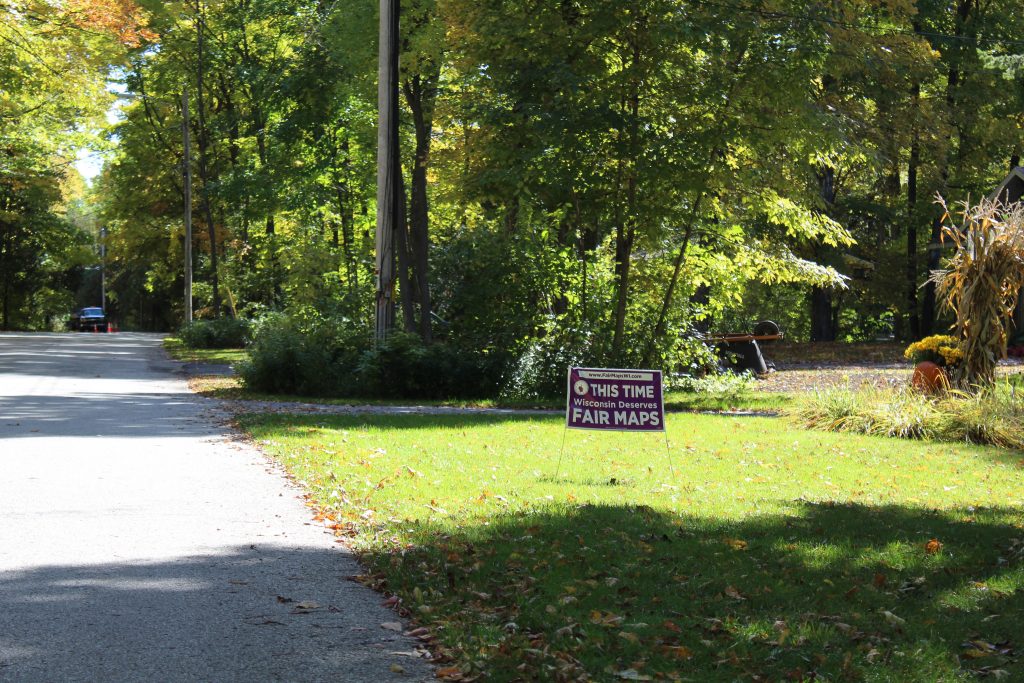
“Should the Wisconsin legislature create a nonpartisan procedure for the preparation of legislative and congressional district plans and maps?”
That’s one of the questions on the ballot for Door County voters in the Nov. 3 general election—in which almost 20 percent of ballots in the county have already been cast, according to the Wisconsin Elections Commission.
The advisory referendum is on the ballot for this election in 11 Wisconsin counties and concerns whether the Legislature should end gerrymandering and adopt a process of independent, nonpartisan redistricting. So far 17 counties and more than a dozen municipalities have already passed similar referendums. Fifty-three of Wisconsin’s 72 county boards have passed resolutions urging the Legislature to pass a law requiring independent, nonpartisan redistricting.
Wisconsin maps are drawn by legislators after the census every ten years and are separated into 99 Assembly districts, 33 Senate districts and eight congressional districts. Wisconsin is one of 37 states in the country in which legislators draw these lines. Many times, districts are drawn to fulfill partisan interests, a practice called gerrymandering.
The term gerrymandering comes from founding father Elbridge Gerry, who, as Governor of Massachusetts, signed a bill in 1812 that created the first voting district designed to have a bias favoring the Democratic-Republican party over the Federalists. The shape of the district was compared to the shape of a mythological salamander.
Gerrymandering consists of two main methods: “cracking” and “packing.”
According to The Fair Elections Project, an organization that advocates for nonpartisan redistricting, “packing” means putting as many of the opposing party’s supporters into as few districts as possible. Thus, that party wins big in those districts, but it doesn’t win many districts overall. “Cracking” means scattering the rest of the opposing party’s supporters into districts where the party has no chance of winning.
The 2018 election resulted in 60 percent of Assembly seats being held by Republicans, even though Republican Candidates received only 45 percent of the popular vote. In contrast, in the 2008 election, before the most recent redistricting, Republicans gained control of only 46 percent of seats by winning 42 percent of the popular vote.
“The mood of voters changes, but the composition of the legislative body does not change.”
Mike Brodd, a member of the Door County Fair Maps task force
Wisconsin Republicans have something of an inherent advantage in Assembly races because Democratic voters are more concentrated geographically in urban areas, especially in Milwaukee and Madison, meaning their voting power is confined to a smaller number of districts.
When the Republican-controlled legislature drew the most recent maps in 2011, it added to the party’s edge. Under the pre-2011 map, Democrats had to outperform Republicans by 2 or 3 points statewide to have a decent chance at winning control of the Assembly, according to a Milwaukee Journal Sentinel analysis of state election results. Under the current map however, Democrats need to out-perform the GOP by closer to 9 or 10 points statewide to have a shot at winning an Assembly majority.
Mike Brodd, a member of the Door County Fair Maps task force, an organization that advocates for nonpartisan redistricting, said gerrymandering affects Door County voters because it alters the makeup of the state legislature and the U.S. House of Representatives.
“What happens is the mood of voters changes, but the composition of the legislative body does not change because the boundaries are so skewed every ten years,” Brodd said.
If voters live in a district in which the outcome of an election is predetermined because of partisan gerrymandering, Brodd said the practice discourages voter involvement.
“It diminishes the value of your vote,” he said. “It distorts democracy.”
Seventy-two percent of Wisconsin voters said they favored nonpartisan redistricting in a 2019 Marquette University poll.
“We need to stop representatives from feeling safe in their position.”
Kim Delorit Jensen, Democratic candidate for District 1 Assembly seat
Kim Delorit Jensen, the Democratic candidate facing incumbent Republican Joel Kitchens for the District 1 Assembly seat that encompasses Door and Kewaunee counties, has said she strongly supports the nonpartisan maps initiative.
“We need to stop gerrymandering,” Jensen said. “We need to stop representatives from feeling safe in their position and not having any competition for their position. … We need to be able to make our votes count and our voices heard.”
Nonpartisan maps advocates, including Jensen, have called for Wisconsin to base its next reapportionment, which will be in 2021, on the “Iowa Model,” because it turns the responsibility of redrawing over to a nonpartisan state agency that is insulated from politics. The Iowa Legislature still approves the agency’s maps, but it cannot amend them.
“If we don’t get this turned around and get a better representation of our voice in Madison, the Republican voice is going to lead our gerrymandering for 10 more years,” Jensen said. “The majority of Wisconsin wants fair maps. How can your legislators—your representatives—ignore that right now?”
Kitchens said he believes that the effects of redistricting in Wisconsin have been vastly exaggerated.
“The problem for Democrats has been that their voters have been so strongly concentrated,” Kitchens said. “The Democrats didn’t care about this issue in 2010 when they thought they would draw the maps.”
“The Democrats didn’t care about this issue in 2010 when they thought they would draw the maps.”
Joel Kitchens, incumbent Republican District 1 Assembly representative
Nonetheless, Kitchens is one of six Republican lawmakers who support Assembly Bill 303, a proposal introduced by Assembly Democrats to end gerrymandering in Wisconsin, which he said was similar to the Iowa model. Kitchens said if the bill passed and districts were drawn to be more fair, he doesn’t believe it would have a very big impact on the composition of the legislature.
“The reason I support it is because I think it’s gotten so much attention that there are a lot of people that really believe they’re not being represented fairly,” he said. “If the public’s faith in the system is eroding, I would be OK with doing something.”
Kitchens said that ultimately if a party puts up a strong candidate, districts drawn in a partisan way won’t be what makes the difference in an election.
Brodd said the only way to get legislators to act on this issue is to put an overwhelming amount of pressure on them.
“And that’s what these referendums are intended to do,” Brodd said. “County by county, municipality by municipality, resolutions and referendums are being brought to voters and they are voting overwhelmingly to develop a nonpartisan procedure for redrawing maps.”
Andrew Phillips contributed reporting.
